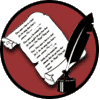%%USERNAME%% %%ACCWORDS%% %%ONOFF%% |
 | No ratings.
Life finds a way, even in magma |
| In the heart of a restless volcano on a distant planet called Ignara, where molten rock churned and bubbled ceaselessly, something extraordinary emerged. For eons, Ignara’s surface had been a wasteland of ash and jagged stone, its core a cauldron of liquid fire. Scientists from Earth, who had long dismissed such environments as sterile, would have been stunned to discover what thrived beneath the crust. It began with the Pyrochrysis, microscopic organisms no larger than a speck of soot. Unlike Earth’s carbon-based life, these creatures were built from silicon and rare metals—titanium, tungsten, and traces of iridium—forged in the planet’s primordial heat. Their "cells" were crystalline lattices, flexible yet resilient, capable of withstanding temperatures exceeding 1,500 degrees Celsius. Instead of water, their lifeblood was a plasma-like fluid of ionized particles, drawn from the magma itself. The Pyrochrysis didn’t merely survive in the magma; they fed on it. They absorbed molten silicates and metallic oxides, breaking them down through a process akin to chemosynthesis, releasing bursts of energy that fueled their growth. Over millions of years, they multiplied, forming shimmering colonies that clung to the edges of lava flows like glowing moss. Their bodies refracted the orange-red light of the magma, casting faint rainbows in the dark currents. But evolution didn’t stop there. As the colonies grew denser, competition for resources sparked a leap forward. The Ignathaera appeared—multi-cellular predators the size of a human hand, resembling segmented worms with crystalline spines. Their bodies were armored in interlocking plates that flexed with the flow of the magma, and they moved by vibrating these plates in rhythmic pulses, propelling themselves through the molten sea. They hunted the Pyrochrysis, using needle-like appendages to pierce their prey and siphon their plasma. The Ignathaera weren’t alone for long. From their discarded husks—shed as they grew—arose the Lavaphyta, plant-like structures that anchored themselves to volcanic vents. These towering, fractal spires of molten glass stretched upward, their surfaces rippling with heat. They didn’t photosynthesize; instead, they harnessed the thermal gradients between the magma and the cooler crust above, converting the energy into a bioluminescent glow that attracted Pyrochrysis colonies. In a strange symbiosis, the Lavaphyta provided shelter, while the Pyrochrysis fed their hosts with excess energy. At the apex of this ecosystem stood the Magmadrakon, a leviathan of the depths. Nearly ten meters long, it resembled a serpentine dragon from Earth’s myths, its body clad in overlapping scales of blackened tungsten. Its eyes—if they could be called that—were clusters of heat-sensitive crystals, attuned to the faintest shifts in the magma’s flow. The Magmadrakon fed on Ignathaera, crushing them between jaws lined with diamond-hard teeth, and it could withstand brief journeys to the surface, emerging from lava pools to bask in the toxic air before retreating to its molten domain. This ecosystem thrived in balance, unseen by the universe beyond Ignara’s scorched surface. The magma, far from a barren hell, was a cradle of life—alien, relentless, and beautiful in its ferocity. When an Earth probe finally descended into the volcano, its last transmission before melting was a grainy image: a Magmadrakon coiling through a forest of Lavaphyta, its scales glinting like stars in a river of fire. |